F18, Talk with the Boss: Olivier Bovyn Interview.

Photo Copyright: Eric Bellande – www.direct-image.fr – F18 Worlds at Erquy
Currently the Formula 18 is the Flag Ship of Catamaran Racing world wide, while other classes needed to cancel Worlds events in the past two years due to globlal crisis, the F18 gathered 180 boats for its own Championship, and that’s an excellent parameter on how successful the class is.
I don´t know which other sailing class beyond Laser or optis?, mono or multihull, can gather that number for a Worlds Championship. Olivier Bovyn is the current IF18CA President, and also one of the founders of the class along with Pierre Charles Barraud. Beyond his dedicated work on the F18, Olivier is member of the French Sailing Federation and also plays a significant role at the ISAF defending multihull interests.
Olivier Bovyn is the current IF18CA President, and also one of the founders of the class along with Pierre Charles Barraud. Beyond his dedicated work on the F18, Olivier is member of the French Sailing Federation and also plays a significant role at the ISAF defending multihull interests.
Olivier is also a classic car racing fanatic, machines driven when races were defined by driver’s ability not technology, just like the F18, beyond every new design launched each year. (Note aside: The number one pilot of that pure bare handling, no computer assisted era is the Argie and 5 time World Champ, Juan Manuel Fangio. Of new era for sure Ayrton Senna, and Schummy on titles)
When I contacted Olivier and Don Findlay in 2005 with an F18 hull cad drawing, they were more than supportive and they both encouraged us to go full forward with the project that now is also a great reality here in Argentina.
Below an interview with Olivier on the Class, Olympics and multis future.
All pics by 1st class professional Photographer Eric Bellande www.direct-image.fr , from F18 World Championship at Erquy, organized by Olivier’s Club CVBE
More info on the class at www.f18-international.org
————–
– CSN:Being head since its foundation, how do feel now, after ten years of the F18?
Olivier Bovyn:Formula 18 is aged 18 actually !… Having said that, you may imagine how nice a feeling it is to see what was originally only a concept in your mind to keep on spreading all over the world, attracting more and more sailors, including top multihull racers coming from the most prestigious classes or disciplines, ie. Olympic Tornado, ORMA 60, or even America’s Cup contenders…
Photo Copyright: Eric Bellande – www.direct-image.fr– Remind us how the class was conceived-created.
OB: In fact, Formula 18 concept was born after a long path, when both Pierre-Charles Barraud and myself were in charge of the FFV’s Multihull section we built up from 1985 and beyond. By those days, catamaran racing was mostly reserved to Hobie 16 and Dart 18 Manufacturer Classes, and the need for handicap racing created endless disputes on the way to allocate correcting numbers…
For this reason, we started to work on PMA numbers, issued using IOMR formulas, and we created then the SCHRS, which is now under the umbrella of ISAF, in order to be able to compute ratings based on measured data, the second step being to create 4 racing groups, C1 to C4, encouraging boats with close rating numbers to compete together.
The big step forward has been made in 1988-1989 when Gérard d’Aboville (the man who crossed Atlantic in a small rowing boat) created with some success “exotic” long distance races in China Sea, attracting some famous skippers, such as Peyron Brothers, Fred Le Peutrec, Eric Bruneel or Jean-Baptiste Le Vaillant (who is now member of the Banque Populaire Team on the Maxi 40m Trimaran…).
After Gérard went to FFV, asking for technical advise, it was decided to use the 1.07 rating (spinnaker being not included) to equalize all competing boats issued from different yards or makes, and it appeared 18 foot was “the right length” to ship boats into… 40 foot containers.
China Sea Raids success lead Yves Anrys, a Belgian sailor, to manage a series, called “Cataworld Cup”, using the regulations issued by Yves Loday, under 18ICCA spelling. Unfortunately, these regulations, largely open, allowing for example Epoxy resin building, quickly lead to a dead end due to the production of expensive “one off’s” boats, not affordable to anyone…
Feeling the urgent need for elapsed time racing to develop sport catamaran activity, we then started thinking, together with Pierre Charles Barraud, about a Formula fixing all speed parameters (length, weight, width, sail area,…), using in addition the SCHRS system to equalize crew weights. The aim was the following :
* to provide fair racing for crews of various weights, from 115 to over 150 kg, through the use of two different sail sizes of jibs and spinnakers, linked to the use of limited corrector weights;
* to maintain competition between the manufacturers in order to keep the costs at the lowest level;
* to allow mixed or female crews to compete on an equal basis in large male fleets;
* to protect the interests of the club sailors through an actual measurement procedure.
So the Formula 18 rules were established in 1993, under the umbrella of FFV… even the first important event to be sailed using it being a long distance race near La Rochelle, following the first ISAF Worlds 1994.
You may read the related article on IF18CA web site www.f18-international.org, “How Formula 18 did come on earth…”
Photo Copyright: Eric Bellande – www.direct-image.fr
– In your opinion which are the keys of the great success of the class?OB: First, I would stress that F18 did actually match sailors expectations : to push forward the concept of fair racing on elapsed time, assuming everyone was given equal chances to win whatever crew size, weight or shape, including mixed teams…immediately attracted numerous competitors all over Europe.
Second, we showed somehow the path to the builders : the market was there, any make not offering to their customers a design to enter the F18 game was out… a good example being Hobie Cat, clearly “on the brakes” at the beginning, still pushing forward their heavy and rather slow Hobie 20 and Hobie 21, until they realise the urgent need for them to offer a possible F18 choice for the members of the Hobie Family… then asking Jean Valer, father of numerous f18 designs, to help them to create the Tiger… with some success !
Third, and this is a matter of fact, we did created a win-win game both customers and builders were interested to play, and, as expected, competition between manufacturers forced them to provide the best cost/performance ratio, for the best interest of club sailors. This has been clearly shown when, due to very disadvantaging currency rates, the Dart Hawk was overpriced, and pushed out of the market accordingly.
– You can´t aim to race in the F1 car racing, even if you have the money to buy one, you can´t race the X40 or AC45 circuit , but you can buy any F18 and race a World Championship against Bundock, Heemskerk, Ashby and the rest of the best catsailors in the World. Which is the relation the class have with Pro sailors?OB: I would say we have no particular relation with Pro sailors, apart from free and very open talks on the parkings of the main cat events, such as EuroCat or F18 Worlds, and I personally have a really friendly contact with Bundy, Glenn, Mischa, and many others, and I have been really proud and happy to welcome James Spithill into the family during the last Worlds I managed in Erquy. Actually, the Pro connection is mostly done through the builders and the technical Committee, every manufacturer forming a proper “Win squad”, aiming to recruiting the best teams…

Photo Copyright: Eric Bellande – www.direct-image.fr
The class has a perfect framework to develop new fleets and promote catsailing, Argentina is the best example, as we started racing on a local made F18 thanks to quite reasonable class rules. Now a new design is launched every year and new fleets are forming worldwide.
– With all the new technical developments in modern cats, how do you forsee the class in ten years? OB: Hard to say unless to be a soothsayer… What I am certain, is that we have to stick on the basic principles of the F18 concept :
– To make sure anyone is given fair chances to compete, and is provided with the very same equipment compared to “manufacturers squads”
– To allow any club sailor to use the very same platform for a minimum of 4 years not fearing to be totally outdated (and it was really reassuring to see the pretty good performance of many Tigers during the last Worlds)
– To maintain the cost as low as possible (so the reason for us to think about board length limitations…)
– To keep the game really open between the different builders (under that aspect, it was fantastic to see that in Erquy we had to wait for the very last race (n°14) to know who would be granted World Champion, and that we got three different designs on the podium ! (Gold for the Wildcat, Silver for the AHPC C2, and Bronze for the Nacra Infusion…)

Photo: Eric Bellande – www.direct-image.fr – James Spithill-Glenn Ashby at F18 Worlds 2010
-Olympics-
The IF18CA does not support any of its designs to become Olympic. But clearly wants Multis back. – Which is the current status? you are also attending next key meeting in May right?OB: Yes, I will join St Petersburg shortly, subject to get my Visa to Russia 😉 …
Answering your first question, we clearly don’t want for F18 as such, (and this would definitely be the “kiss of death”), neither any of our current designs to be selected as Olympic equipment, and we duly put a submission on ISAF table last November. Having said that, I have no power to stop Hobie Cat C°, Nacra or AHPC to apply for selection during the scheduled evaluation trials…
But we certainly wish more than strongly a Multihull discipline (or even 2…, according to the 5/5 concept) to be back at the Olympics, for the best interest of the whole ISAF family, as not to retain Multihull again would be more than a fault, when most of the biggest sailing events are multihull driven ! Have a look on the Round the World Record breakers, the Hydroptère project, the Extreme 40 series,… and now the America’s Cup.
Furthermore, in terms of development, we need to provide our young sailors with modern heroes, in line with the equipment we offer them to sail.
– Mandatory Mixed crews is not the best option, Open should be the choice, but this is better than nothing, please describe the background on this Mixed proposal. OB: Looking at the numerous submissions proposing alternate slates for the 10 disciplines selected last November in Athens, it seems we are quite certain to get at least a mixed Multihull discipline, and this is really encouraging, even a little bit “tricky” towards IOC. It is probably the price to pay for Multihulls to be back at Olympics, opening the door for a possible 2 Multihull disciplines, men and women, for 2020…
Mixed racing is probably not the best option, but I would say I prefer this to Open, as Open always means “men”… From that perspective, catamaran sailing is probably the family where mixed sailing is not that unusual, some popular classes, Dart 18 or Hobie 16, counting actually many mixed teams amongst their members.
To conclude, I would had one more positive point : to retain a mixed Multihull discipline would probably lead to develop or promote some modern 16/17 foot manufacturer classes, and then to offer those attractive boats to the 16-25 year old young teams under 140kg as an intermediate towards F18 and possible 20 foot Olympic cat !
-AC-
Multihulls are having the greatest exposure ever with the Extreme Series and the AC, every traditional monohull sailor that is discovering this ‘new’ way of sailing is asking himself “what I’ve doing the past 20 years” as many Artemis Team sailors told Santi Lange after a few rides on the X40s at Florida training sessions.
– In which way the rest of the ‘beachcat’ classes must make good use of this new Era?OB: Once more, I would refer to the idea of a patch from the very grass roots towards Elite sailing, and to the need for offering perspectives to youngsters and rookies. There is a clear link from sport catamaran sailing towards maxi multihulls or AC racers. How many former Tornado sailors are now crewing 60 footers ? For which reason did James Spithill enter the 2010 F18 Worlds ? Look at Franck Cammas swapping from Groupama 60 ft trimaran to F18 Worlds (getting a Silver medal !), or Jeremie Lagarrigue, talented young FFV National Champion, being now in charge of the Hydroptère project…
All “Beachcat” sailors definitely are belonging to the same family, applying the same basic principles, the first being “Keep one hull flying !”
There is a clear need for talented crew members on all these big multis, so clear perspectives for “Beachcat” classes to provide them…
 -Youth-
-Youth-
– France is the main promoter for Youth catsailing and racing. please describe to foreigners which are the organizations that are managing and promoting youth sailing in France. OB: First, you have to know FFV is given full authority on the sport of sailing from the French Ministery of Sports. So FFV did actually build complete and parallel programs from 12 years old to 18/19 years old youngsters, covering all the sailing families (single handed, double handed, windsurf, and catamaran), using incentives, sponsors and public funding to help sailing clubs to finance and supply the needed equipment.
Clubs are the key part of the system. They are assembled into provincial bodies, relaying FFV’s action, and looking for local funding, in conjunction with tourism and education purposes, one of the goals being to make sailing as usual as soccer towards teachers and local governing bodies.
Success for those programs is linked to shared costs concept : when you succeed in financing and redeeming equipment purchase through tourism for example, by renting boats and delivering training, then it is possible for you to make sailing cheaper for the youngsters, from primary schools to University …
In addition, FFV and provincial bodies do train coaches, to help them to deliver the best possible coaching to the youngsters.
– Multihull-
– The F18 is mainly sailed by grown ups, in part due to costs that are getting higher (for inflation, usd exchange or whichever reason).OB: We need more youths in the class, now a specific program of the IF18CA is aiming to get more youngters being able to participate in local fleets.
– In your opinion, why we don´t have more youths racing on F18s? OB: Cost is the core issue, even weight, shape and strength are playing a role into F18 youth development. We plan to offer reserved World slots and free training for teams under 23, and, fortunately enough, competition between builders gives opportunities for some talented young teams to be provided with free equipment in order to broaden the manufacturer squads and, accordingly, the chances to win.
It is then to notice that F18 is now officially recognised by FFV for youngsters to qualify for elite training programs. I wish every MNA were to do so !
2010 Worlds at Erquy – Photo by Eric Bellande check more at www.direct-image.fr
– Future-
I have a clear view of what is the future of sailing: a dramatic change towards performance saling will take place and 4knots monohulls will be used as cruising and pleasure rides, but I´m sure that in the futre we will have an Olympic distribution like this: Moth, Windsurf, Kite, Multihulls double handed, Multis single handed and a Skiff like the 49er. – Is this scenario possible for you?OB: I would share your point, but the problem is that most, for not saying quite all ISAF members are mainly dinghy oriented, and that the weight of dinghy classes into the decision making process is just enormous, when the multihull world is still weak in terms of representation… (so the 2007 decision made in Estoril to reject the Tornado !)
The only chance for this scenario to become possible would be for IOC to harden its position related to media coverage and, accordingly, to course formats and selected equipment… Who knows ?OB: Whatever the case, one thing is certain : Life is too short to sail slow !
——–All pics by 1st class professional Photographer Eric Bellande www.direct-image.fr , from F18 World Championship at Erquy


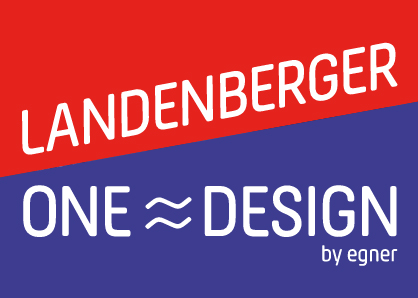
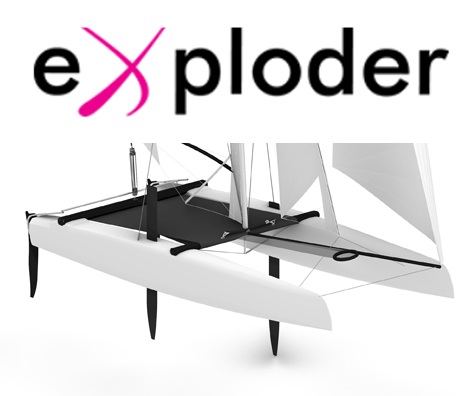
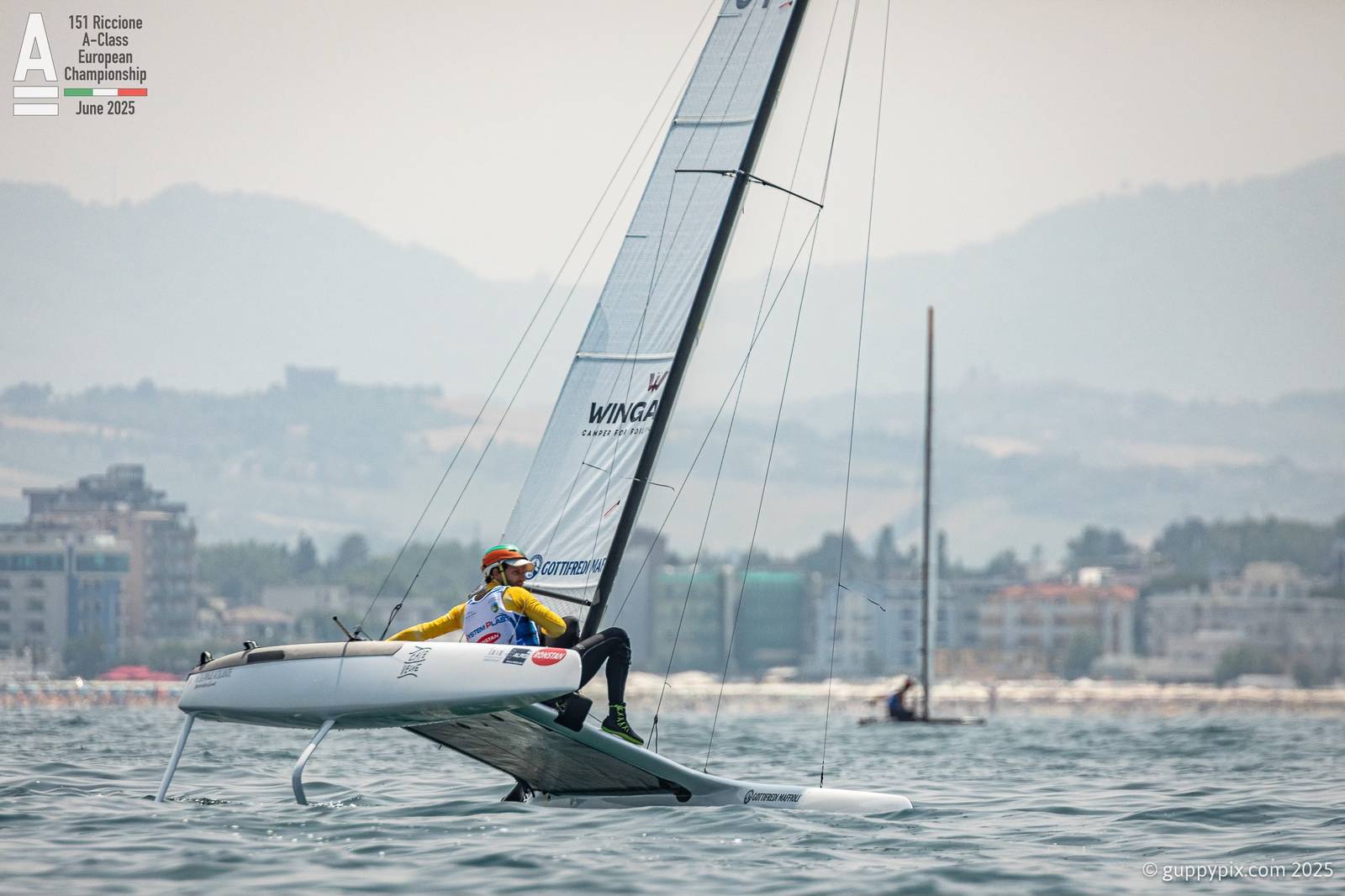
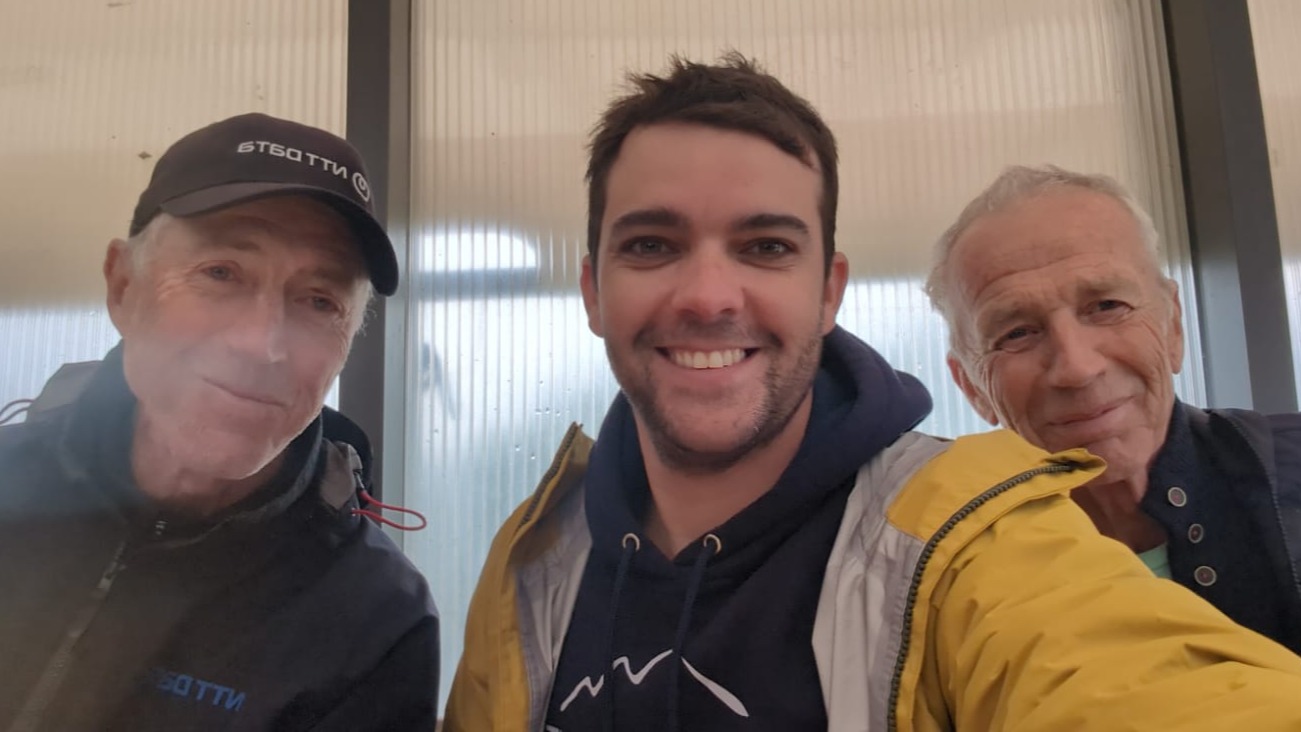
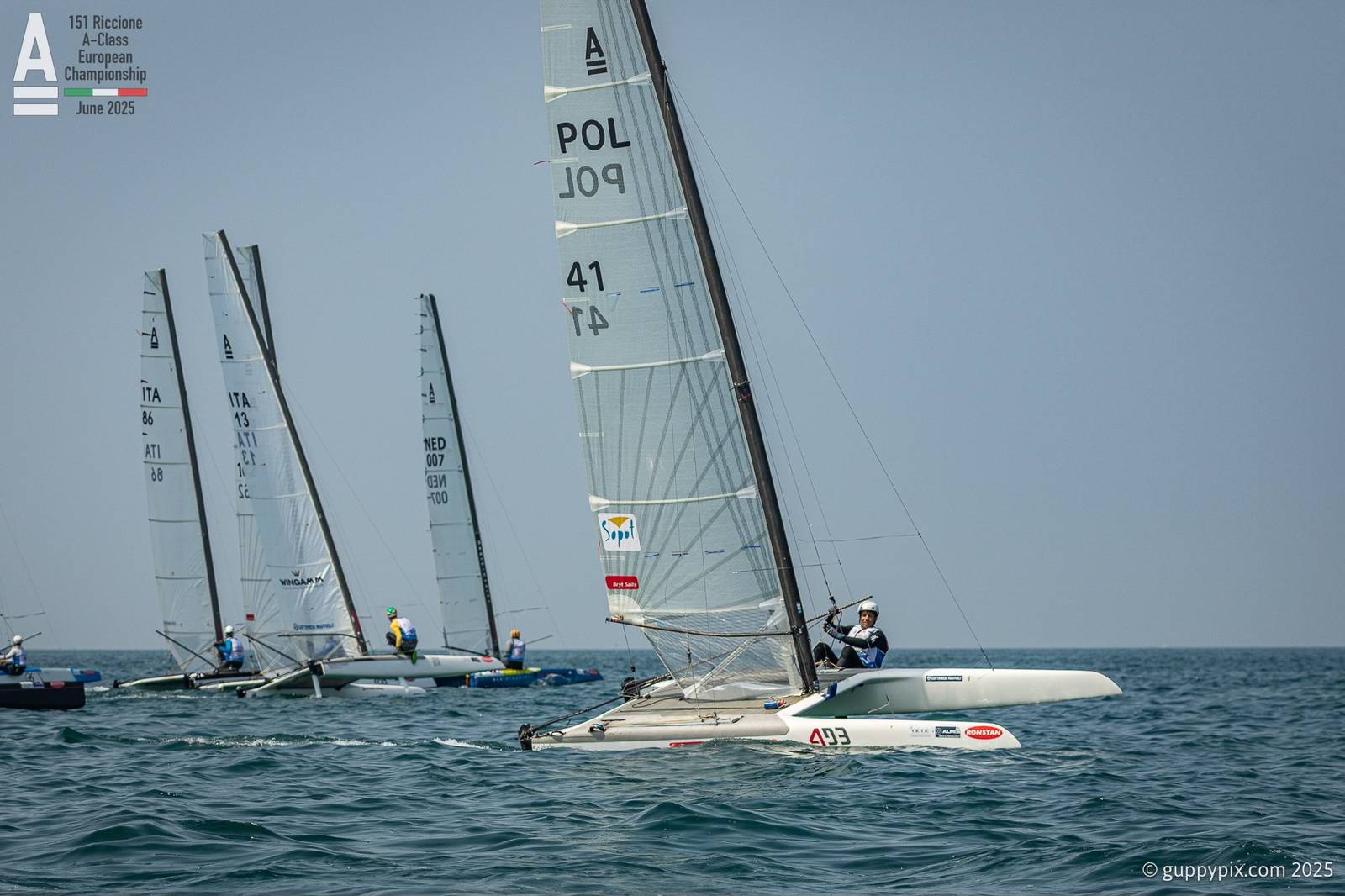
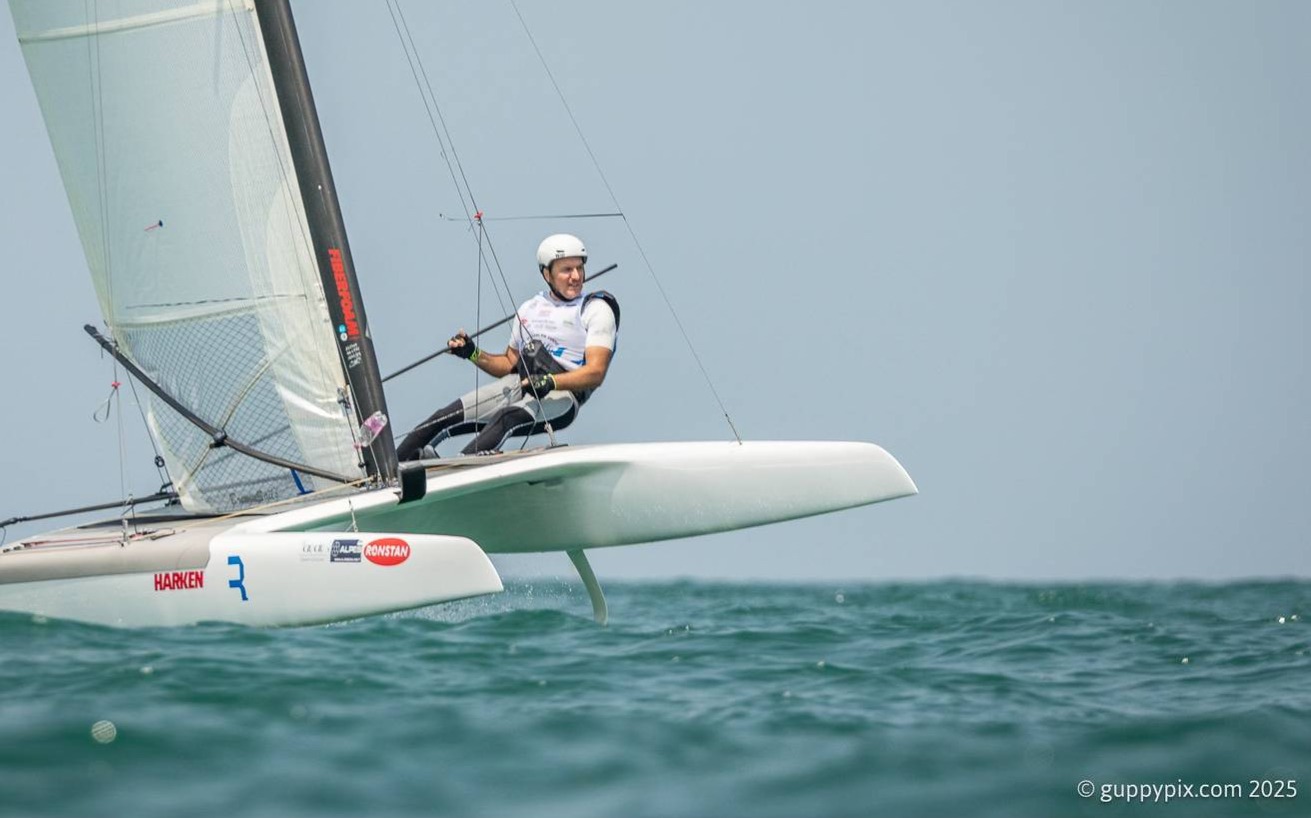
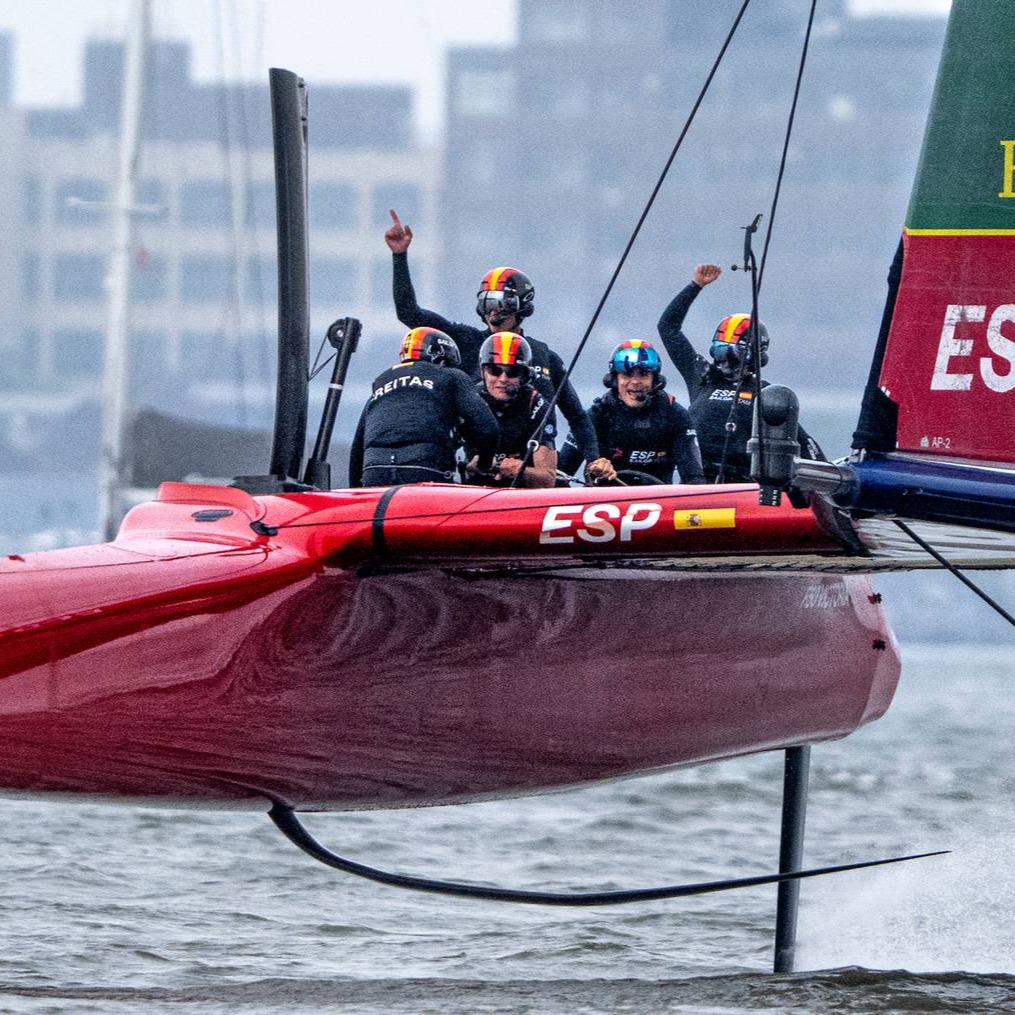
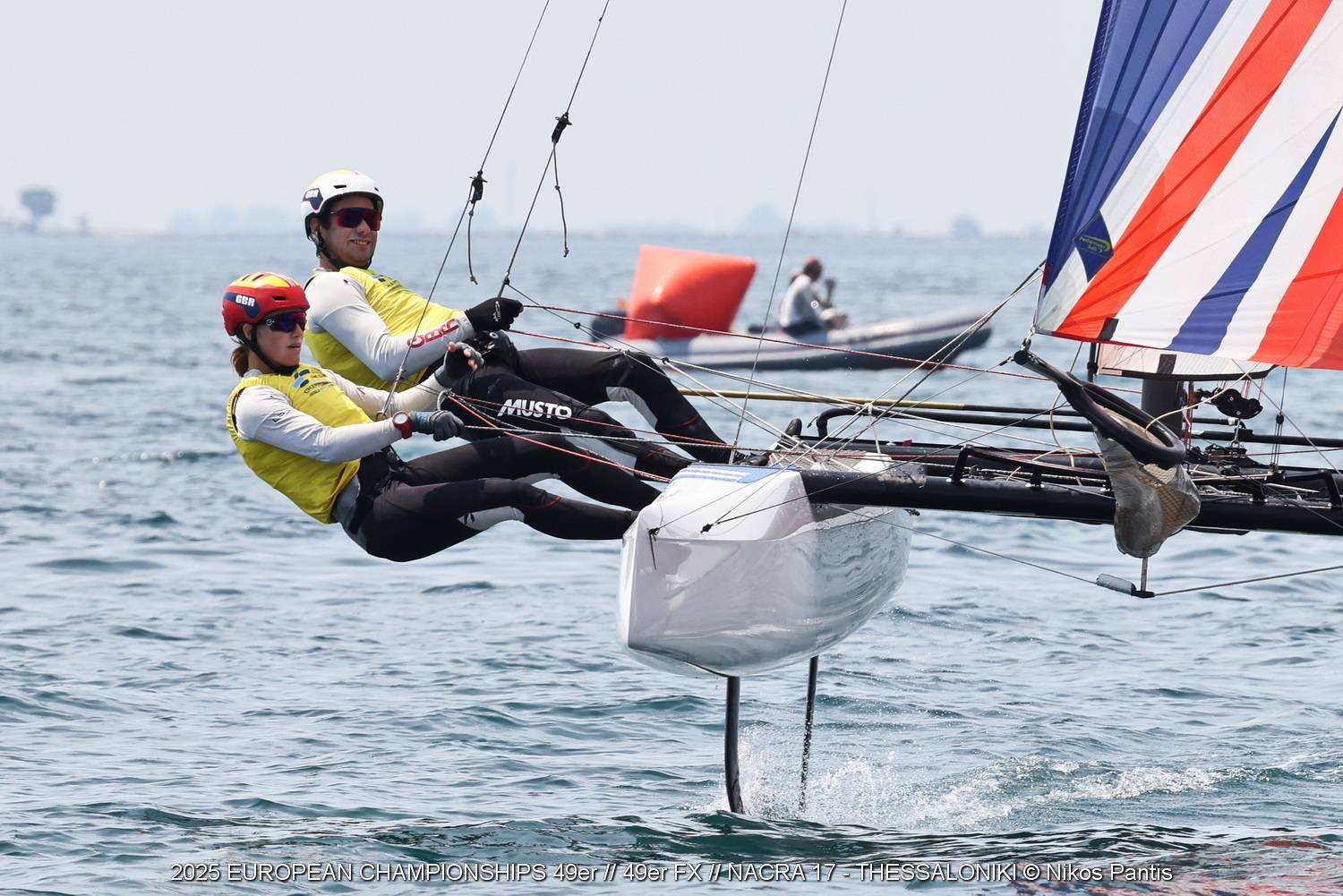
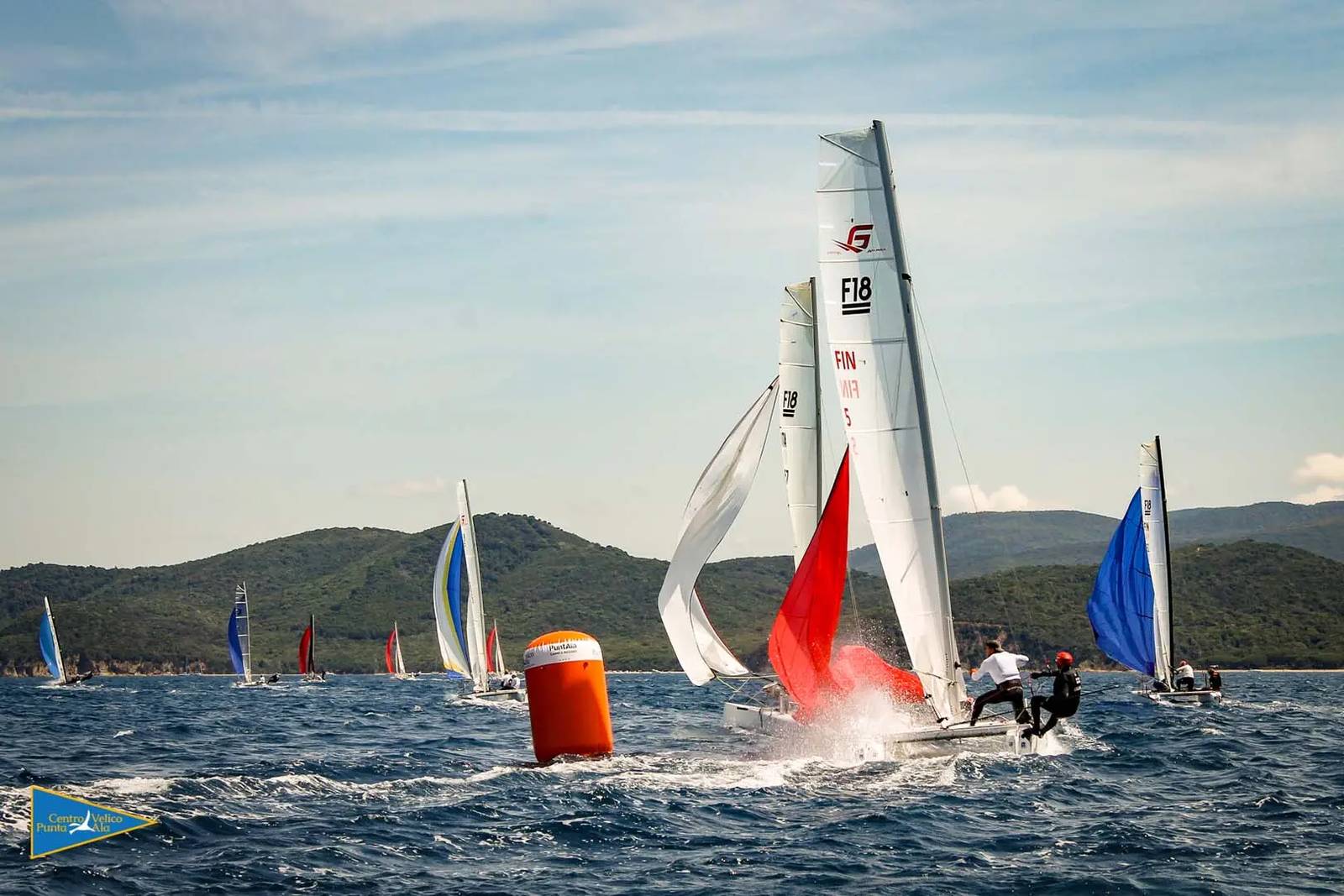
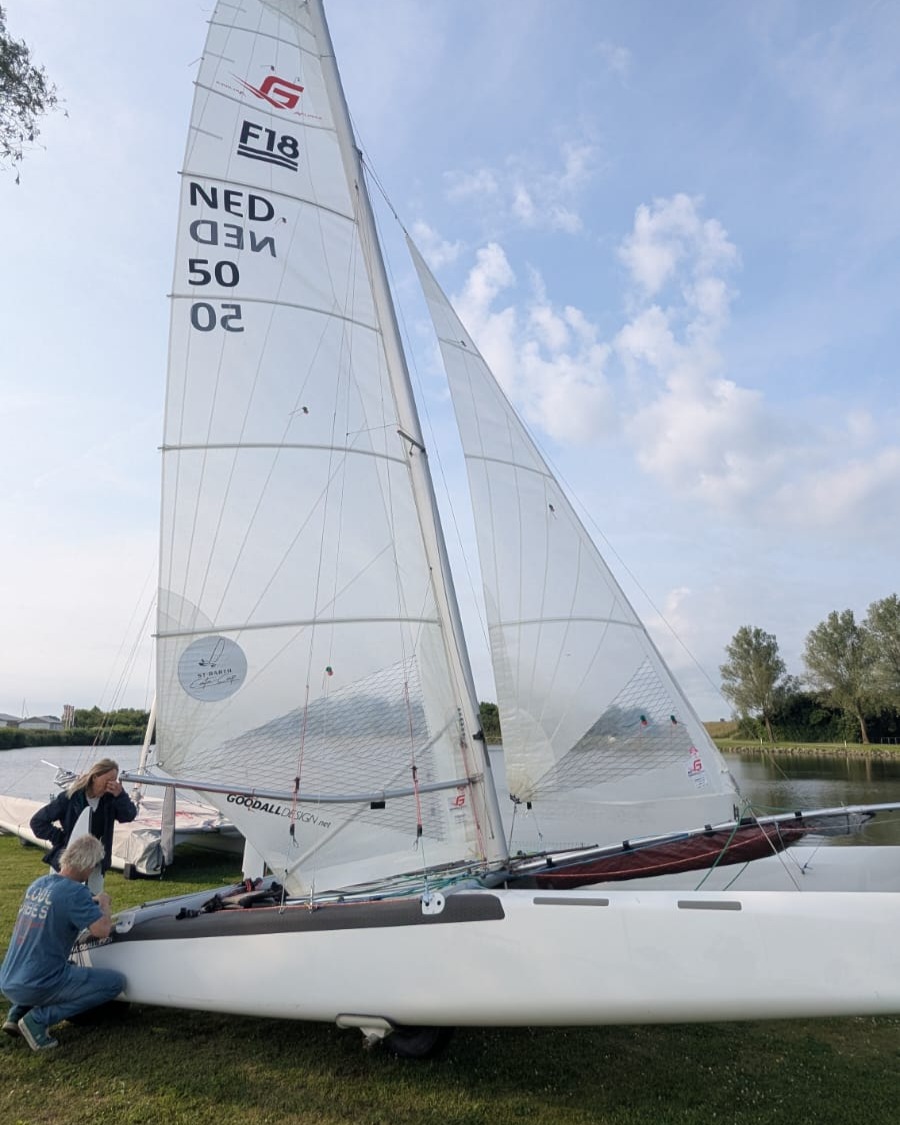
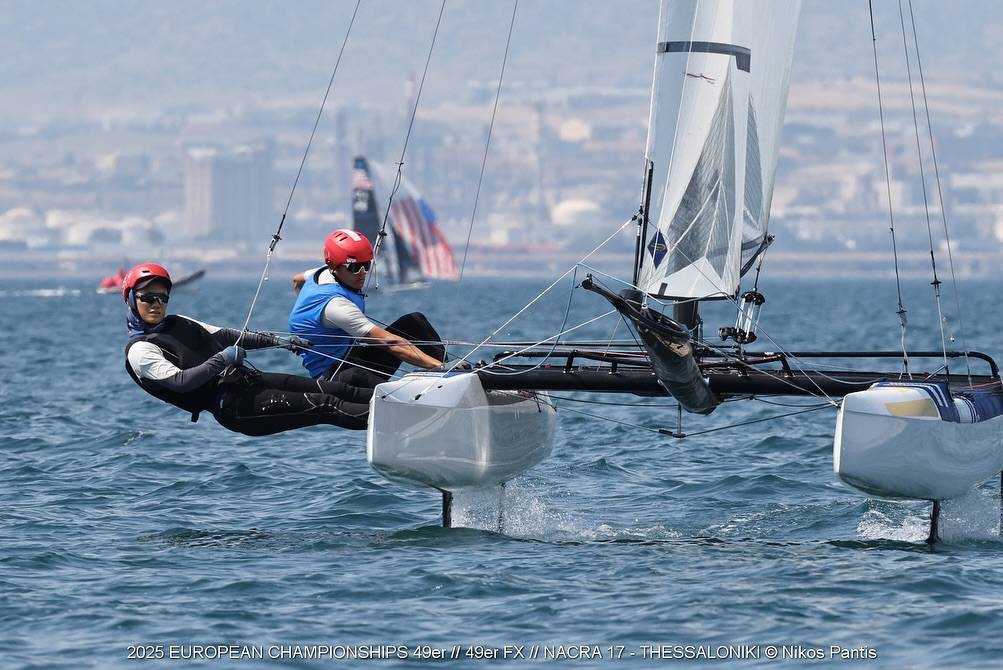



















It's nice story from Olivier only when i get in 1990-1991 world champion in the ICCA class than we talking already about to built a new class in the box rules with Robert and Reg White and Yves Loday the Hawk was the first boat in this kind of rule box F 18.
sailing regards
Gerard loos
Interesting Olivier said at the ISAF Mulithull Commision he would no objections to an older F18 being chosen as an Olympic boat.